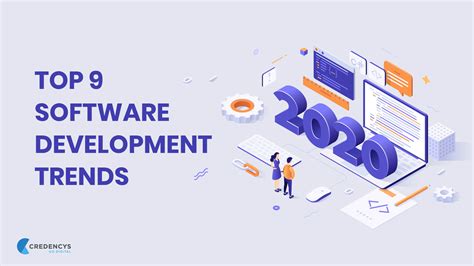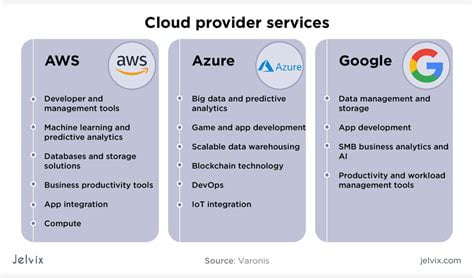In today’s increasingly digital world, the amount of data being generated and collected is expanding at an unprecedented rate. As a result, the need for effective tools and technologies to manage and analyze this vast amount of information has become paramount. Two such powerful tools are Python and R, both widely used in the field of big data and cloud computing.
Python and R are programming languages that offer extensive capabilities for data analysis, visualization, and machine learning. Combined with the scalability and flexibility of cloud computing, these languages have transformed the way organizations handle big data. Whether it’s processing massive datasets or building sophisticated models, Python and R provide the necessary tools and libraries to tackle complex data challenges.
Introduction
Welcome to the world of big data and cloud computing with Python and R! In this article, we will explore the powerful capabilities of these programming languages and how they can be leveraged to analyze, process, and visualize massive amounts of data. Whether you are a data scientist, a programmer, or simply an enthusiast in the field of technology, this article will provide you with valuable insights into the world of big data and cloud computing.
Big data and cloud computing have revolutionized the way organizations handle data. With the exponential growth in data volume, velocity, and variety, traditional methods of data analysis and management have become inadequate. This is where Python and R come into play. These languages offer extensive libraries and frameworks, designed specifically for handling big data. Furthermore, the scalability and flexibility of cloud computing provide the necessary infrastructure to process and store massive datasets effectively.
Why Python and R are Perfect for Big Data and Cloud Computing
Python and R are two of the most popular programming languages in the field of data science. They offer a wide range of tools and libraries that make data analysis and machine learning tasks more efficient and manageable. Let’s explore why Python and R are the go-to languages for big data and cloud computing:
1. Extensive Libraries and Packages
Both Python and R have extensive libraries and packages designed specifically for big data processing, analysis, and visualization. Python libraries such as Pandas, NumPy, and Matplotlib, along with R packages like dplyr, ggplot2, and caret, provide powerful tools to manipulate and visualize large datasets.
2. Easy Integration with Cloud Services
Python and R seamlessly integrate with popular cloud services like Amazon Web Services (AWS) and Google Cloud Platform (GCP). This allows for effortless deployment and scaling of applications, making it easy to process and analyze large datasets in the cloud.
3. Versatility and Flexibility
Python and R offer a wide range of functionalities beyond big data analysis. Both languages can be used for web development, machine learning, natural language processing, and more. This versatility makes them suitable for a variety of data-related tasks.
4. Community Support
Python and R have vast and active communities of developers and data scientists. This means that there is a wealth of documentation, tutorials, and community support available, making it easier to learn and troubleshoot any issues encountered during development.
Strengths of Big Data and Cloud Computing with Python and R
Big data and cloud computing, when combined with Python and R, offer numerous strengths that make them indispensable in the world of technology. Let’s delve into the key strengths of this powerful combination:
1. Scalability
Cloud computing provides limitless scalability, allowing organizations to process and store massive amounts of data without worrying about hardware limitations. Python and R seamlessly integrate with cloud services, enabling users to leverage the power of scalable infrastructure for their big data needs.
2. Efficiency
The extensive libraries and packages available in Python and R, combined with the parallel computing capabilities of cloud platforms, enhance the efficiency of big data analysis. Tasks that would traditionally require significant computing resources can be executed more quickly and with reduced costs.
3. Data Visualization
Python and R excel in data visualization, offering a wide range of tools to create interactive and insightful visual representations of big data. From line graphs to heatmaps, these languages allow users to explore and communicate complex patterns and insights effectively.
4. Machine Learning Capabilities
Both Python and R have extensive machine learning libraries and frameworks, making it easier to build predictive models and extract meaningful insights from big data. The scalability of cloud computing further enhances the training and deployment of large-scale machine learning models.
5. Cost-Effectiveness
By leveraging cloud computing and open-source tools like Python and R, organizations can minimize infrastructure costs associated with big data projects. Cloud platforms offer pay-as-you-go pricing models, enabling users to scale resources according to their needs and reduce overall expenses.
6. Real-Time Data Processing
Python and R, when used in conjunction with cloud computing, allow for real-time data processing. This is essential for applications that require up-to-date insights or need to process streaming data, such as real-time analytics or fraud detection systems.
7. Data Security
Cloud computing platforms offer robust security measures to protect sensitive data. Python and R, being widely adopted and supported languages, often have security-focused libraries and frameworks to ensure the confidentiality, integrity, and availability of data.
Frequently Asked Questions (FAQs)
1. How do Python and R handle large datasets effectively?
Both Python and R have libraries and packages optimized for handling big data. Python’s Pandas library and R’s dplyr package provide efficient methods to manipulate and analyze large datasets by leveraging parallel processing and memory management techniques.
2. Can Python and R be used together in big data projects?
Yes, Python and R can be used together in a complementary manner. Python excels in data preprocessing and manipulation tasks, while R is known for its statistical and visualization capabilities. By combining the strengths of both languages, users can harness the power of Python and R for comprehensive big data analysis.
3. Is cloud computing necessary for big data processing with Python and R?
While cloud computing offers numerous advantages, it is not a strict requirement for big data processing with Python and R. Users can leverage the power of their local machines or set up on-premises clusters to handle big data. However, cloud computing provides scalability, cost-effectiveness, and flexibility that can greatly enhance big data projects.
4. Are Python and R suitable for real-time analytics?
Yes, both Python and R can be used for real-time analytics. They offer libraries and frameworks that enable the processing and analysis of streaming data. Python’s libraries, such as Kafka and Spark Streaming, along with R’s packages, like data.table and streamR, allow for real-time data processing and insights extraction.
5. What are some limitations of big data and cloud computing with Python and R?
Big data and cloud computing with Python and R do have some limitations. Working with extremely large datasets may require specialized distributed computing frameworks like Apache Hadoop or Apache Spark. Additionally, the learning curve for beginners in Python and R can be steep, requiring time and effort to become proficient in these languages.
6. How can I learn Python and R for big data and cloud computing?
There are numerous online resources, tutorials, and courses available to learn Python and R for big data and cloud computing. Websites like Coursera, Udemy, and DataCamp offer comprehensive courses designed specifically for data analysis and cloud computing using Python and R. Additionally, there are plenty of free online tutorials and documentation available for self-paced learning.
7. How can I secure my big data projects in the cloud?
Securing big data projects in the cloud involves implementing appropriate security measures at multiple levels. This includes strong access management, encryption of data at rest and in transit, regular security audits, and adherence to industry-specific compliance standards. Cloud service providers like AWS and GCP offer extensive security features that can be utilized to safeguard big data projects.
Conclusion: Tap into the Power of Big Data and Cloud Computing with Python and R
As technology continues to advance, the importance of effectively managing and analyzing big data becomes increasingly evident. Python and R, when combined with cloud computing, offer powerful tools and capabilities to tackle the challenges posed by large datasets. From scalable infrastructure to efficient data processing and visualization techniques, this combination has the potential to revolutionize industries and drive impactful discoveries.
Whether you are a data scientist, a programmer, or an enthusiast, harnessing the power of big data and cloud computing can lead to exciting opportunities and insights. Don’t miss out on the chance to tap into the vast potential of Python and R in the realm of big data. Start exploring, learning, and applying these technologies today to unlock a world of possibilities!
Disclaimer: The views and opinions expressed in this article are those of the author and do not necessarily reflect the official policy or position of any company or organization.
 Eltupe Technology And Software Updates
Eltupe Technology And Software Updates




